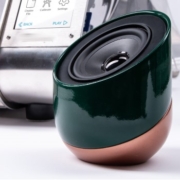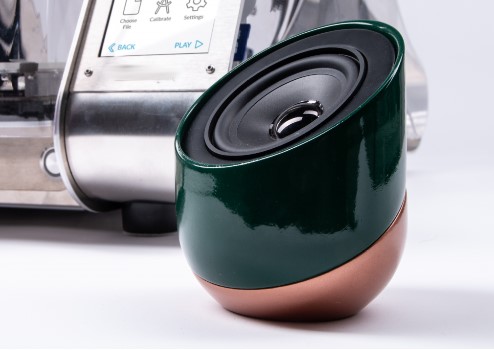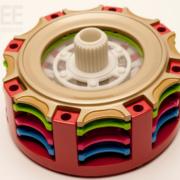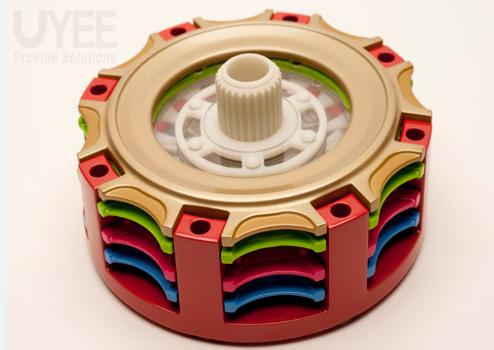How much do you know about Rapid Prototyping Services?
Rapid prototyping entails specialized manufacturing methods to create high-quality physical models of a 3D design concept. Prototypes may get used to upgrade designs as stepping stones to total production or for engineering tests. They get designed to be cost-effective and straightforward, with no investment in complex tooling required. Many customers need a physical part to get produced promptly to validate a design or capitalize on a brief sales opportunity.
It is a set of methods used to generate a model of a part from CAD data rapidly. The component can get built using CNC milling technology, 3D printing, or additive layer manufacturing.
- CNC milling technology – CNC machining is very effective in Prototype manufacturing from various materials such as metal, wood, and plastic. For now more and more people prefer this process to develop their new products.
- 3D printing – This is an additive manufacturing process that produces functional prototypes using CAD data and 3D printers. The most of advantage of this process is without the structure limited on the part.
- Additive layer manufacturing – Laminated object manufacturing and solid ground curing are two other additive manufacturing processes. It’s new and modern manufacturing way .
What are the Advantages of Rapid Prototyping?
Whether you are an engineer, industrial designer, or part of a product development team, rapid prototyping services will provide you with many benefits, including:
- The ability to quickly explore and cost-effectively realize concepts. Quick turnaround times and low costs enable teams to progress far beyond the visualization of an idea, making it easier to understand the physical world’s properties and design.
- Reiterate designs and incorporate changes that allow for improved product evaluation and functional testing. This iterative approach serves as a road map for designing and refining the final product before releasing it to the market, ensuring that the client’s design is optimized and error-free.
- Show ideas concisely and successfully. Rapid prototyping transforms thoughts, pictures, and concepts from a notion or two-dimensional visual into tangible goods that customers, colleagues, and collaborators can hold and see in action.
- The capability of thoroughly testing and refining a concept. The ability to mitigate design flaws with small-volume rapid Prototype manufacturing aids in the elimination of expensive design flaws that may not be apparent during an early evaluation.
- By eliminating the need for setup and tooling, one can save time and money by using rapid prototype services. Because they can use the same equipment to create different prototypes with different properties and materials, overall costs and turnaround time is minimum.
What are the Disadvantages of Rapid Prototyping?
There are a few drawbacks to using rapid prototyping services that we should consider. Here is the list of few disadvantages of Rapid prototyping:
- Sometimes prototype cannot present exactly the performance of the end product.
- Issues with matching strength and surface finish using 3D printing technology.
- Additional upfront costs
- Some rapid prototyping processes are not cost-effective.
- Skilled labor is required to create a perfect model according to the product design.
- Materials available for use are limited.
- It could also lead to insufficient analysis.
What are the different types of Rapid Prototyping Services?
CNC Machining
CNC machining is perfect for producing high-quality rapid prototypes out of plastic or metal without the need for costly tooling. Components will have tighter tolerances and better surface finishes than those made by other prototype services. Also, companies can machine all of the features required for a fully functional portion, such as tapped and threaded holes and exactly flat surfaces and all kinds of finished requirements .
For all CNC needs, companies have over 30 CNC mills, lathes, and EDM machines on-site. They also have a multilingual support team to ensure that the product development journey is as easy and stress-free as possible.
Metal 3D Printing
Metal 3D printing is perfect for creating complicated shapes that are light in weight but strong in strength. Complex tooling is not required, and it can print parts in hours rather than days or weeks.
To develop completely dense sections for maximum performance, companies use a cutting-edge Renishaw AM250 printer. Equally important, they have in-house specialist technicians who can provide clients with an unrivaled engineering knowledge level to ensure clients get the best quality finished product.
Vacuum Casting
Polyurethane vacuum casting molds should produce up to 30 high-fidelity copies of the original master pattern. Parts may be overloaded in different materials and molded in various resins, including engineering-grade plastics. It is suitable for low volume production plastic, rubber products with fast turn around . And also ,it can get saved much more cost to compare with plastic injection molding , so this is a big advantage .
Companies specialize in producing high-quality cast copies from master patterns. The client will benefit not only from companies’ outstanding attention to detail, but they also offer a complete suite of finishing services to take part up to showroom quality.
SLA Prototype
SLA is one of the first plastic 3D printing or additive manufacturing processes. These techniques are not only rapid, but they also allow you to create complicated internal features that are difficult to produce using traditional manufacturing methods. To make master patterns for vacuum casting molds, companies use SLA. It is best suited for producing small quantities of finished parts or prototypes.
CONCLUSION
With technological innovations, it is high time to adopt the latest manufacturing, rapid prototyping to save time, money, and the effort to create the new product. This type of technology is essential during new product development process and innovations.




